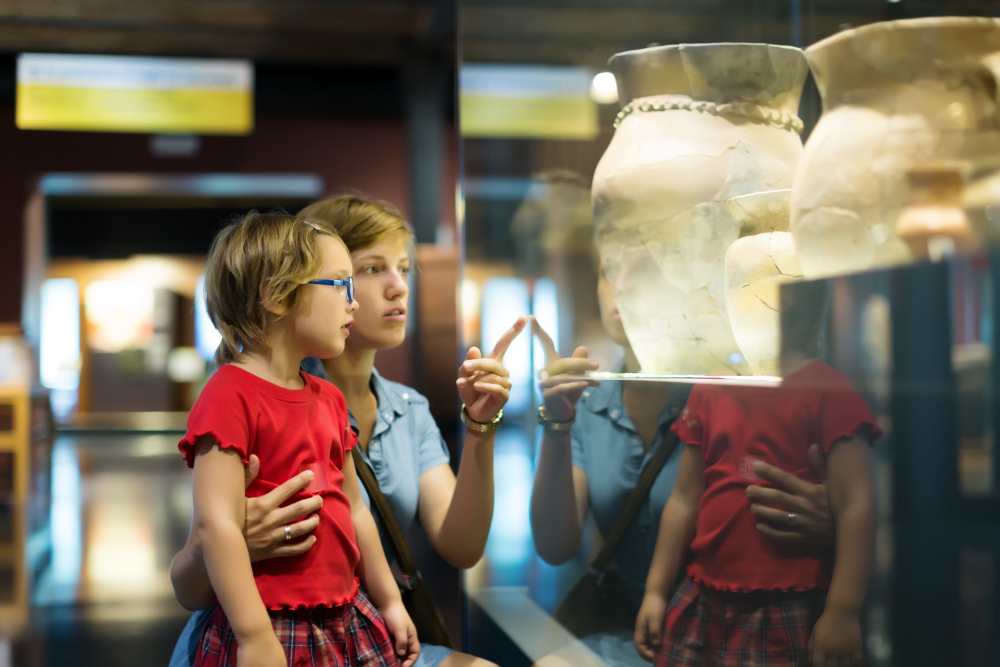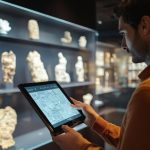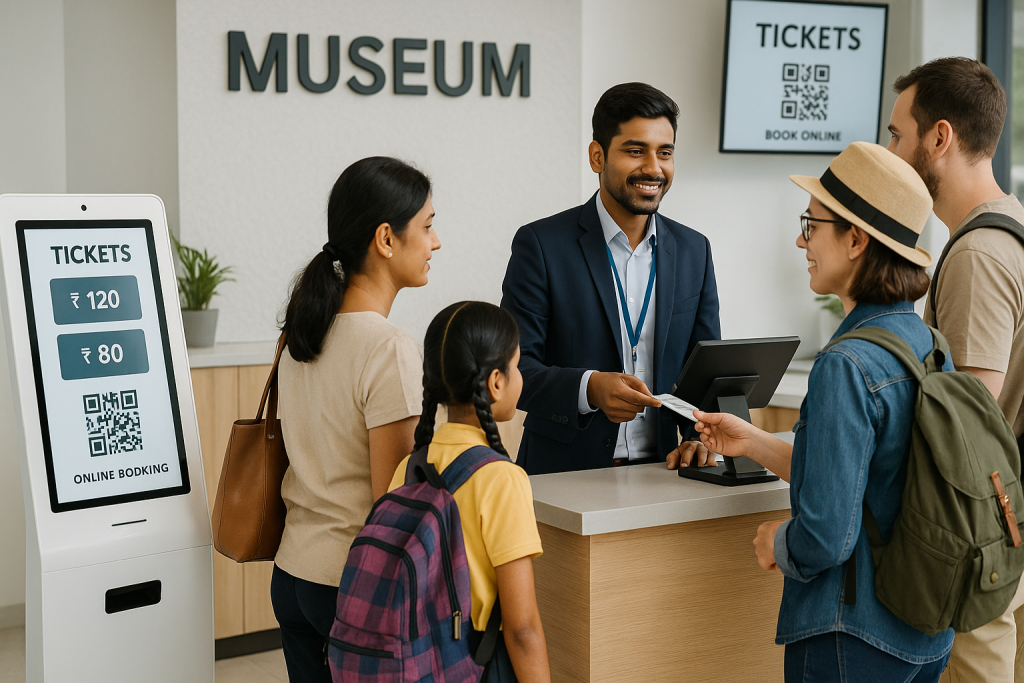Museum Software for Small Museums is transforming the way smaller institutions operate, helping them compete with larger, well-funded museums. Limited budgets, smaller staff, and niche collections can make it challenging to attract visitors and stay relevant in a fast-paced, tech-driven world. However, the advent of affordable technology has leveled the playing field, offering small museums the tools to compete effectively.
In this blog, we’ll explore how small museums can leverage technology to enhance visitor engagement, streamline operations, and boost revenue—all while staying within budget.
Small Museum Advantage in the Digital Age
Understanding Your Unique Value Proposition
Small museums have distinct advantages that larger institutions often lack. These include:
- Community Connections: Small museums are deeply rooted in their local communities. They often serve as cultural hubs that reflect the unique history and identity of their regions.
- Specialized Collections: Unlike larger institutions that cover broad topics, small museums often focus on niche areas, offering highly specialized and authentic experiences.
- Authentic Experiences: Visitors to small museums frequently value the intimate and personal touch these venues provide.
Why Technology is the Great Equalizer
Technology has become a game-changer for small museums. Post-pandemic, digital adoption surged across cultural institutions as they sought to engage audiences online. Affordable tech solutions now allow even the smallest museums to:
- Reach wider audiences through digital platforms.
- Improve operational efficiency with cost-effective tools.
- Offer immersive experiences using virtual and augmented reality.
For instance, a community museum in India implemented low-cost digital ticketing software and increased its revenue by 30% within a year. The investment was minimal compared to the impact it created.
Essential Museum Software for Small Museums
Affordable Ticketing Solutions That Transform Visitor Experience
A robust ticketing system is no longer a luxury, it’s a necessity. Features like online booking, timed entry management, and membership tracking can significantly enhance visitor convenience while boosting revenue.
- Online Booking Capabilities: Allow visitors to book tickets anytime, anywhere.
- Timed Entry Management: Manage crowd flow effectively in smaller spaces.
- Membership Tracking: Build long-term relationships with loyal patrons.
Digital Collection Management Systems
Cataloging collections is essential for preservation and accessibility. Budget-friendly, cloud-based collection management systems help small museums organize their artifacts while making them accessible to the public.
- EveryTicket is a low-cost solution.
- Cloud integration ensures data security and remote access.
- Public-facing platforms allow visitors to explore collections online.
Virtual and Augmented Reality on a Budget
Virtual Reality (VR) and Augmented Reality (AR) are no longer exclusive to large-budget institutions. Affordable tools now enable small museums to create engaging digital experiences.
- Use AR apps like HP Reveal to overlay digital content on physical exhibits.
- Platforms like Matterport make virtual tours easy to create.
Example: A local heritage site used AR to bring historical photographs to life, creating an interactive experience that attracted younger audiences.
Digital Strategies to Compete with Big Museums
Building an Effective Online Presence
A robust online presence is essential for small museums to attract visitors and compete effectively. Instead of investing heavily in website development, adopting a ticketing solution like EveryTicket can simplify operations while enhancing your museum’s digital footprint. EveryTicket allows you to offer online booking, timed entry management, and membership tracking directly through its platform, eliminating the need for complex web design.
By using EveryTicket, your museum can provide visitors with a seamless booking experience while gaining valuable insights into visitor behavior. These insights can be leveraged to optimize marketing strategies and improve engagement. Additionally, EveryTicket integrates smoothly with tools like Google Business Profiles and social media platforms, helping your museum rank higher in local searches and reach broader audiences.
Social Media for Small Museum Visibility
Social media remains one of the most cost-effective ways to engage audiences. With EveryTicket’s integration, you can promote events, share visitor testimonials, and encourage user-generated content—all directly linked to your ticketing system.
5 Social Media Post Ideas:
- Behind-the-scenes looks at exhibits.
- Visitor testimonials about their experience.
- Trivia related to your collection.
- Announcements for upcoming events.
- Interactive polls or quizzes tied to museum themes.
Data-Driven Decision Making for Small Cultural Organizations
Visitor Analytics on a Budget
Understanding visitor behavior is crucial for improving their experience. Free or low-cost analytics tools can provide valuable insights:
- Use Google Analytics or similar tools to track website traffic.
- Install simple visitor counters at physical locations.
Key metrics include visitor demographics, peak visiting hours, and popular exhibits.
Using Insights to Enhance Visitor Experience
Data can inform decisions like:
- Crowd Management: Optimize exhibit layouts based on visitor flow data.
- Exhibition Planning: Focus on themes that resonate most with your audience.
- Personalization Opportunities: Tailor marketing campaigns based on visitor preferences.
Collaborative Technology Approaches for Independent Museums
Sharing Resources with Other Cultural Institutions
Collaboration can help small museums stretch their budgets further:
- Form technology consortiums with other local institutions to share costs.
- Apply for grants that fund collaborative tech projects.
Example: Three community museums pooled resources to develop a joint mobile app showcasing their collections.
Working with Local Tech Talent
Tap into local talent pools for affordable technical assistance:
- Partner with universities or coding bootcamps for student projects.
- Seek pro bono help from tech professionals passionate about culture.
Data-Driven Decision Making for Small Cultural Organizations
Visitor Analytics on a Budget
Understanding visitor behavior is crucial for improving their experience. Free or low-cost analytics tools can provide valuable insights:
- Use Google Analytics or similar tools to track website traffic.
- Install simple visitor counters at physical locations.
Key metrics include visitor demographics, peak visiting hours, and popular exhibits.
Using Insights to Enhance Visitor Experience
Data can inform decisions like:
- Crowd Management – Optimize exhibit layouts based on visitor flow data.
- Exhibition Planning – Focus on themes that resonate most with your audience.
- Personalization Opportunities – Tailor marketing campaigns based on visitor preferences.
Collaborative Technology Approaches for Independent Museums
Sharing Resources with Other Cultural Institutions
Collaboration can help small museums stretch their budgets further:
- Form technology consortiums with other local institutions to share costs.
- Apply for grants that fund collaborative tech projects.
Example: Three community museums pooled resources to develop a joint mobile app showcasing their collections.
Working with Local Tech Talent
Tap into local talent pools for affordable technical assistance:
- Partner with universities or coding bootcamps for student projects.
- Seek pro bono help from tech professionals passionate about culture.
Implementation Roadmap: Where to Start
Assessing Your Current Technology Landscape
Start by evaluating your current setup:
- Conduct a technology audit using a checklist (e.g., website performance, ticketing system).
- Identify gaps and prioritize areas needing improvement.
- Set realistic timelines for implementation.
Conclusion
Technology empowers small museums to compete effectively with larger players by enhancing visitor experiences, improving operational efficiency, and expanding reach—all without requiring massive budgets. By starting small and scaling strategically, even community-based institutions can make a big impact in the digital age.
Ready to take your museum to the next level? Discover how EveryTicket’s affordable and user-friendly museum software for small museums can streamline ticketing, boost revenue, and enhance visitor engagement. Try EveryTicket today!
FAQs
- How much should a small museum budget for technology? Start small—allocate 5–10% of your annual budget initially and scale up as you see returns.
- What technology skills should small museum staff develop? Basic skills in social media management and analytics are essential.
- How can small museums measure ROI from technology investments? Track metrics such as ticket sales growth, visitor engagement rates, and operational efficiency improvements.
- Which technology solution should small museums implement first? Begin with an affordable ticketing system like EveryTicket—it offers immediate ROI through streamlined operations and increased bookings.



